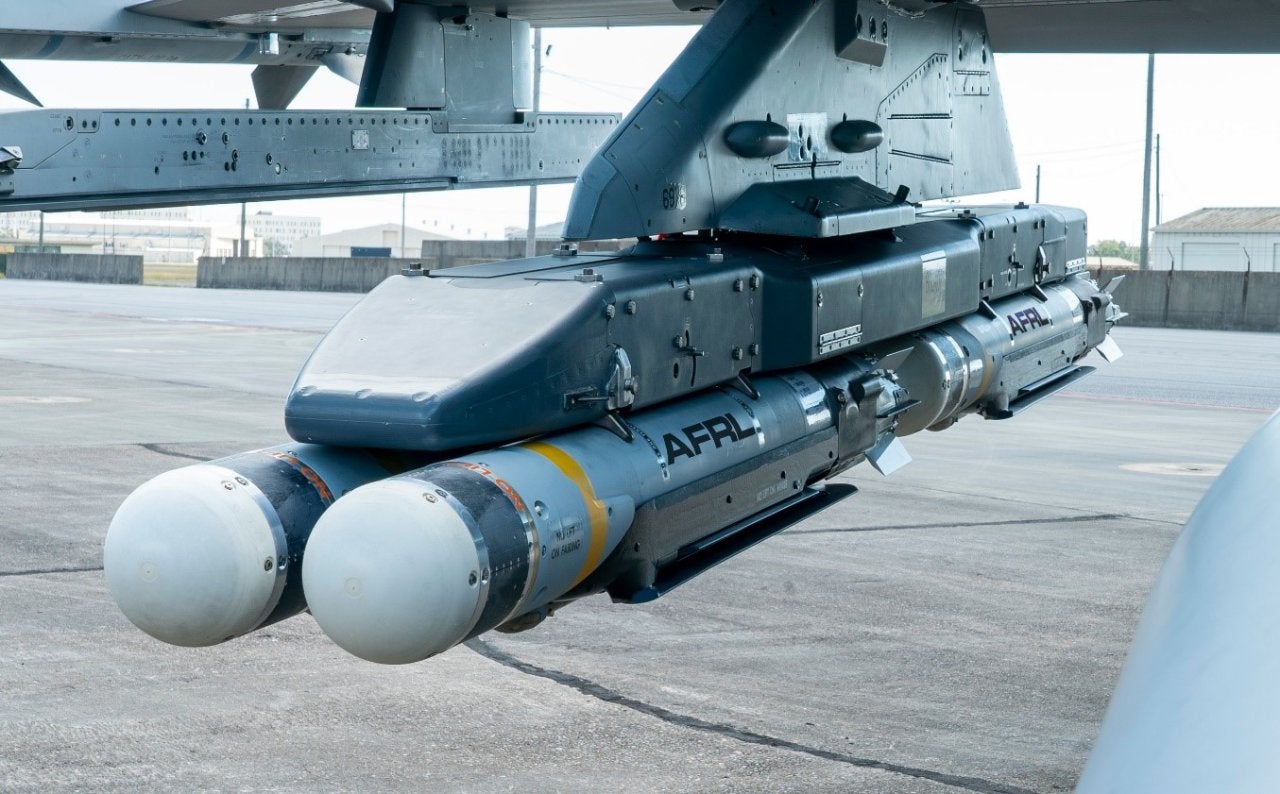
The US Air Force (USAF) Golden Horde Vanguard programme has completed the first flight demonstration of collaborative weapons.
The demonstration, which used technology developed by the Air Force Research Laboratory and Scientific Applications & Research Associates, was partly successful.
During the test, an Air Force Test Center team flew an F-16 Fighting Falcon and released two Collaborative Small Diameter Bombs (CSDBs).
These CSDBs are small diameter bombs modified with a collaborative autonomy payload. Following their launch, the bombs established communication with each other and their seekers detected a GPS jammer.
The weapons determined that the jammer was not the highest priority target, as referred to predefined rules of engagement, and then collaborated to identify the two highest priority targets.
However, the weapon navigation system failed to receive the collaboration guidance commands due to an improper weapon software load. Subsequently, the weapons impacted a failsafe target location, as the target locations were not updated.
AFRL Transformational Capabilities Office director Chris Ristich said: “The Golden Horde demonstration with the Small Diameter Bomb flights is an important step on the path to Networked Collaborative Weapon systems.
“Completion of this first mission sets the stage for further development and transition to the warfighter.”
The demonstration was regarded as the first step for the Golden Horde programme, which seeks to upgrade networked, collaborative and autonomous (NCA) weapon capabilities through live and virtual testing.
Such weapons can respond to dynamic changes in the battlefield, thereby increasing mission effectiveness.
The USAF plans to conduct two more CSDB flight tests this year.



